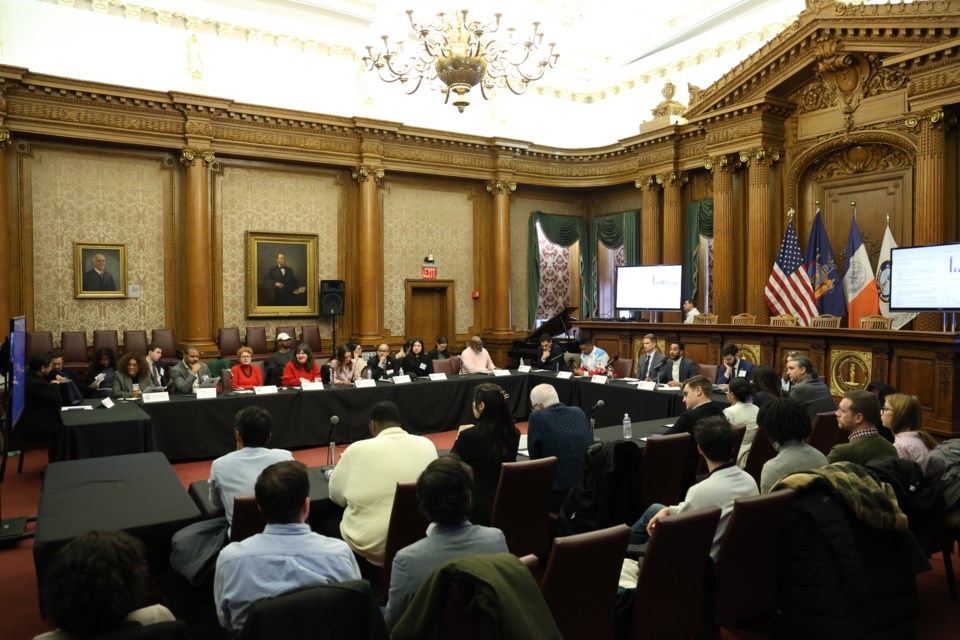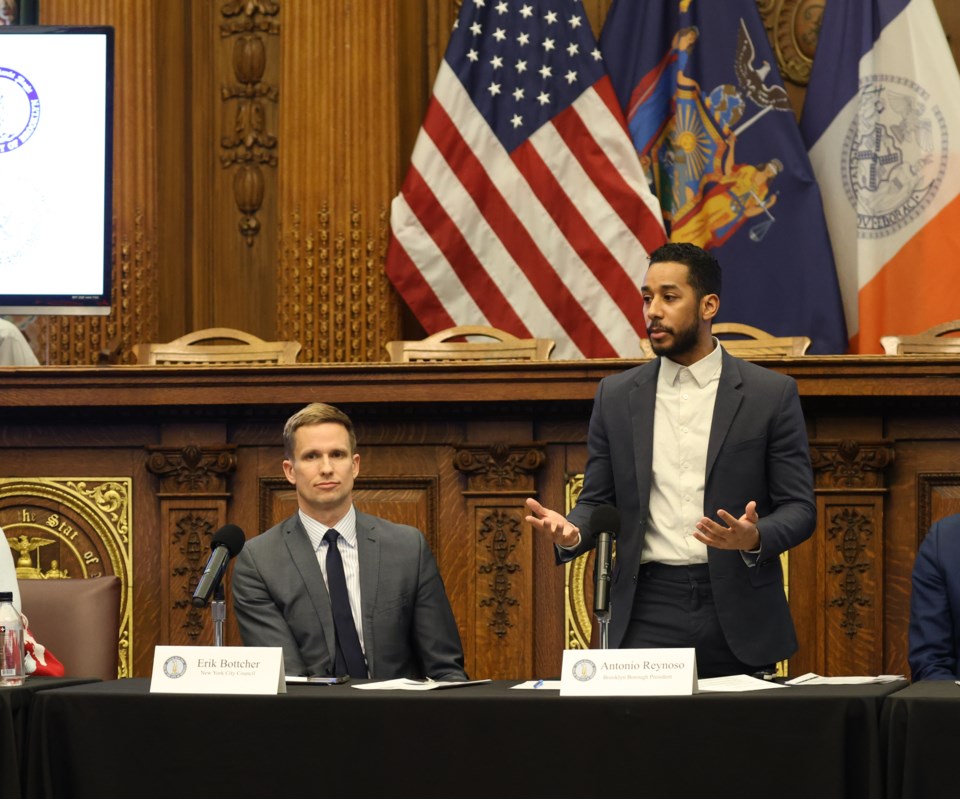Is building more housing in Brooklyn a civic duty?
According to Brooklyn Borough President Antonio Reynoso and Manhattan City Council Member Erik Bottcher, the answer is crystal clear: Yes! Adding more housing “is not just about your own community; this is about the entire city of New York,” said Reynoso at the first meeting of a newly created pro-housing league on Friday.
The city is facing a housing crisis, where the vacancy rate is now at 1.4%, the lowest level since 1968. With less available housing, it has become increasingly difficult for low- and middle-income New Yorkers to secure a place to live, the officials said.
In addition, the city needs to build over 560,000 units by 2030 to address expected population and job growth projections.

“The goal of this group is to solve the housing crisis and to redefine the word ‘crisis,’ because people are desensitized to it,” Reynoso said. “We have hundreds of thousands of people in homeless shelters, or the rent is too high, or people are one paycheck away from homelessness. This is a crisis.”
Sixteen elected officials from the city and state attended the first meeting, as well as staff of 18 additional representatives, where they discussed if and how Albany legislators could add or change real estate tax incentives and Mandatory Inclusionary Housing (MIH) options, lift the Floor Area Ratio (FAR) caps, find ways to hasten commercial conversions and pass the Good Cause Eviction bill into law.
An achievable near-term measure is to find a replacement for the 421-a tax credit, which gave real estate developers tax breaks for buildings that included a certain amount of affordable housing units, said Bottcher. (The popular ratio was to make 80% of the units market-rate and the rest affordable.)
The expiration of the tax credit two years ago discouraged builders from creating new housing. In 2022, before the credit expired, there were 46,593 proposed units in the pipeline, whereas in 2023, only 9,909 units were planned, according to data provided by Borough Hall.
“If we go another year without replacing the 421-a, it will be disastrous for New York City,” Bottcher said.
Reynoso said he and members of the league, which is still forming, will provide support for any elected official who is having a tough time convincing voters that building housing is a civic duty. The league “will give you cover” to combat a city-wide housing crisis by emphasizing to all city residents that what you do in your neck of the woods affects everyone in the five boroughs, Reynoso said.
But some elected officials fear they must walk a fine line when approving more housing, as it could cost them their job. Last year, Councilmember Marjorie Velázquez lost her city council seat after supporting a rezoning plan in her Bronx district.
“I’ll go to each community board to have this difficult conversation and stand by elected officials in front of empty lots,” to educate the public on why more housing is needed, Reynoso said.
This includes targeting areas such as Bay Ridge and other south Brooklyn neighborhoods that have not added any new housing stock in years. For example, Community District 1, which covers Greenpoint and Williamsburg, added 18,500 housing units between 2013 and 2023, while CD 18, which spans Canarsie, Bergen Beach, Mill Basin, Flatlands, Marine Park, Georgetown and Mill Island, added only 500 units, according to data included in Reynoso’s Comprehensive Plan.
Reynoso and Bottcher both conceded that it has been hard to explain to officials and residents why rents keep rising in areas where housing has been built, despite many studies proving that more housing is the solution. For example, a November 2023 study by New York University's Furman Center found that building more homes slows regional rent growth and frees up units for residents across the income spectrum.
We need to correct the misconception that new housing is bad for the community and it stops gentrification, said Bottcher.
“Gentrification is raging all though the city because of the mismatch of housing demand vs supply,” in the entire city, Bottcher said. “Who is winning the competition of available units? It’s not the working or middle class.”
Sometimes you see two or three new buildings going up and you think that’s a big change, Reynoso said. “But in East New York, there were 40 cranes,” so people need some more perspective.
Last year, 2,600 units were voted down by council members during the Uniform Land Use Review Procedure, or ULURP process, according to Reynoso.
“We don’t want that,” he said. “We want them to say 'yes.'”



.png;w=120;h=80;mode=crop)
